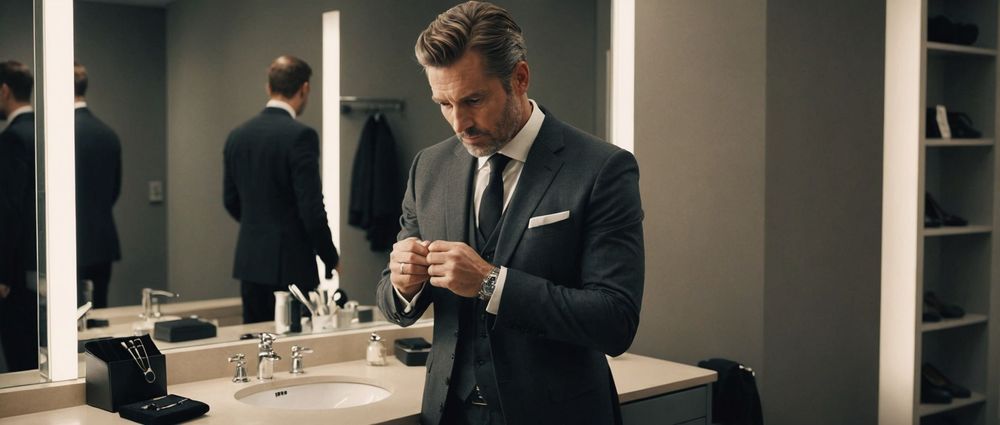Your clothing choices speak volumes about your personal brand, often before you ever utter a word. The way you dress can convey professionalism, creativity, authority, or approachability, making it essential to align your wardrobe with the image you wish to project. In this article, we’ll explore effective strategies for using clothing as a tool to express your personal brand, ensuring that your attire resonates with your professional and personal aspirations.
Understanding Your Personal Brand

Before you can use clothing to portray your personal brand, it’s important to first define what that brand is. Your personal brand encompasses your values, passions, and the unique attributes that differentiate you from others. Here are several steps to help you articulate your brand:
- Identify Your Core Values: Reflect on what matters most to you, such as integrity, creativity, or teamwork.
- Analyze Your Audience: Understand who you want to reach and how you want to be perceived by them.
- Highlight Your Unique Qualities: Consider what makes you stand out, whether it’s a particular skill set or your approach to problem-solving.
- Craft Your Brand Statement: Create a succinct statement that encapsulates your brand, guiding your clothing choices.
By understanding your personal brand in-depth, you’ll be better equipped to select clothing that genuinely reflects who you are and what you want to project to the world.
Choosing the Right Colors

The colors you wear can significantly influence the perception of your personal brand. Colors evoke emotions and carry different meanings, so it’s important to choose shades that align with your brand message. Here are some popular colors and what they can convey:
- Blue: Represents trust, reliability, and professionalism.
- Red: Conveys excitement, passion, and energy.
- Green: Suggests growth, freshness, and tranquility.
- Black: Exudes sophistication, power, and elegance.
- Yellow: Symbolizes positivity, creativity, and warmth.
Select colors that not only feel good to you but also resonate with the persona you want to express. For instance, if you are aiming for a more professional appearance in your career, incorporating navy blue into your wardrobe may help enhance your credibility.
Choosing the Right Styles
After selecting the appropriate colors, consider the styles of clothing that align with your personal brand. Styles can vary widely, from formal business attire to casual chic, and your choices will reflect your professional identity. Here are some key factors to think about:
- Industry Norms: Research what is typical in your field. Different industries have different standards of dress.
- Body Shape and Fit: Ensure that your clothing fits well and flatters your body type.
- Comfort and Confidence: Choose styles that make you feel comfortable and confident; your comfort will be visible to others.
- Adaptability: Opt for pieces that can be mixed and matched for various occasions, increasing the versatility of your wardrobe.
By combining the right colors and styles, you can curate a wardrobe that accurately reflects your personal brand while allowing you to express your individuality.
Accessorizing to Enhance Your Personal Brand
Accessories are the finishing touch to any outfit and can further enhance your personal brand. They allow for additional expression and personalization, making your attire truly unique. Here’s how to effectively use accessories:
- Choose Pieces Wisely: Select accessories that complement your outfit without overwhelming it.
- Be Consistent: Ensure that your accessories align with the image you want to communicate—think about brand message, style, and color consistency.
- Incorporate Unique Items: Using unique or handmade accessories can help you stand out and signify your personal style.
- Don’t Overdo It: Less is often more, especially in professional settings. Use accessories to accent, not dominate.
A well-chosen accessory can serve as a conversation starter and provide insight into your personality, making them a valuable addition to your personal brand portrayal.
Evaluating Your Wardrobe Regularly
Finally, one of the best practices in maintaining a personal brand through your attire is periodic evaluation of your wardrobe. Fashion trends and personal preferences can shift, so it’s essential to adapt accordingly. Here’s how to evaluate your clothing regularly:
- Assess Fit and Comfort: Discard items that no longer fit well or that you feel uncomfortable wearing.
- Analyze Use: Reflect on which pieces you’ve worn often. Keep the items that align with your brand and get rid of those that don’t.
- Stay Informed: Stay updated on current fashion trends to keep your wardrobe fresh and relevant.
- Seek Feedback: Ask friends or colleagues for their opinions on your style and what they feel represents your brand.
By taking the time to regularly assess and evolve your wardrobe, you ensure that your clothing continues to align with your ever-evolving personal brand.
Conclusion
In conclusion, your clothing is a powerful tool for portraying your personal brand. By understanding your brand, selecting appropriate colors and styles, accessorizing thoughtfully, and evaluating your wardrobe regularly, you can effectively communicate who you are to the world. Remember, what you wear speaks just as loudly as your words, so make each outfit a reflection of your unique identity.
FAQs
1. How can I determine what my personal brand is?
To determine your personal brand, reflect on your core values, unique qualities, and how you wish to be perceived by others. Craft a brand statement that sums up your identity and aspirations.
2. What should I do if I feel uncomfortable in certain clothing associated with my brand?
If you feel uncomfortable in specific clothing, it’s essential to prioritize comfort while ensuring the attire aligns with your brand. Experiment with different styles until you find a balance that works for you.
3. How often should I evaluate my wardrobe?
It’s advisable to evaluate your wardrobe at least twice a year, though quarterly checks or seasonal updates can help keep your style fresh and aligned with your personal brand.
4. Can I wear casual clothing while maintaining a professional personal brand?
Absolutely! Casual clothing can be styled in a professional manner. It’s crucial to choose fits, fabrics, and accessories that elevate your casual looks to ensure they reflect your brand effectively.
5. Are there certain colors I should avoid based on my personal brand?
Yes, consider avoiding colors that do not resonate with your brand message or that may evoke negative perceptions within your industry. Lighter shades might project different messages than darker colors, so choose wisely.





